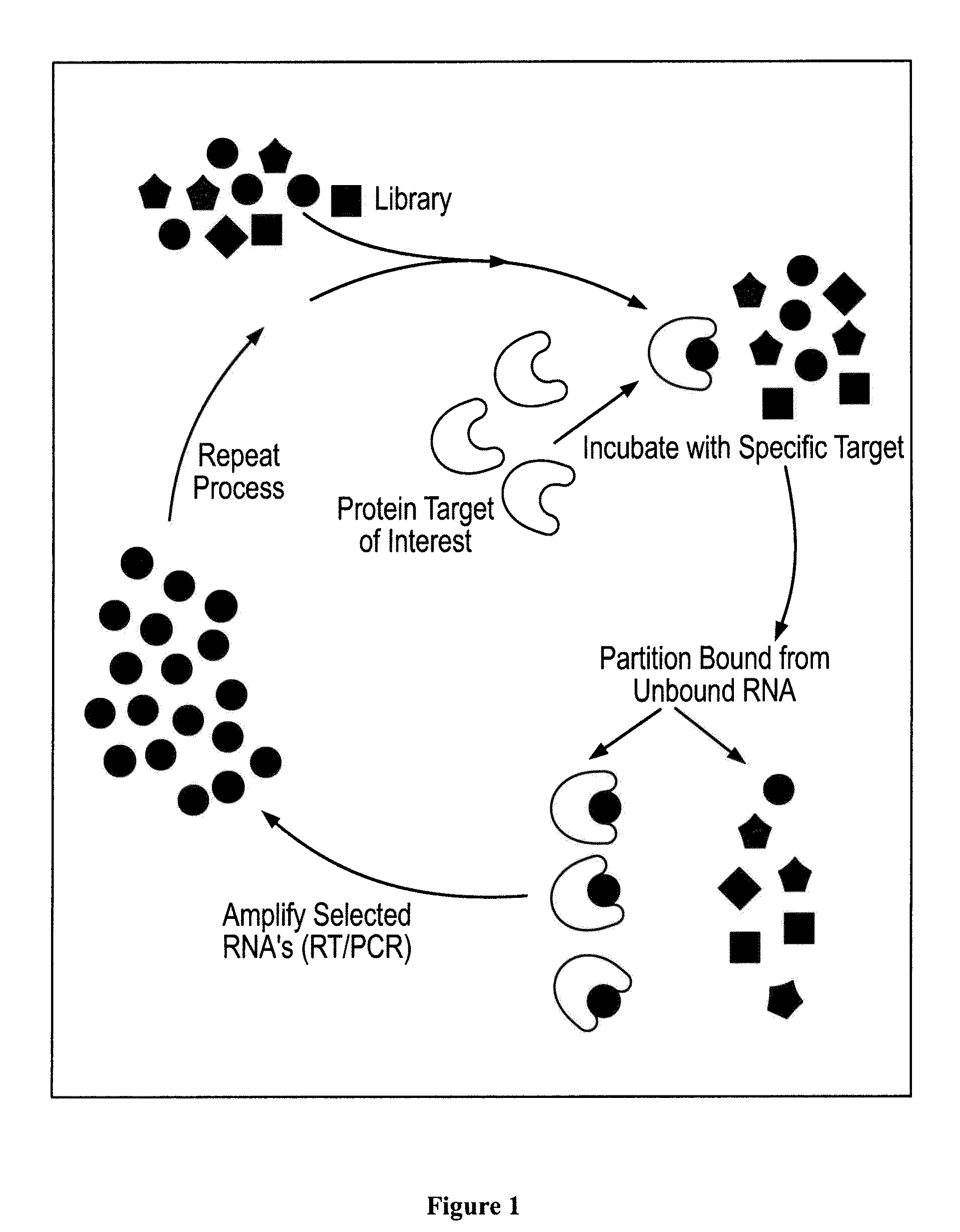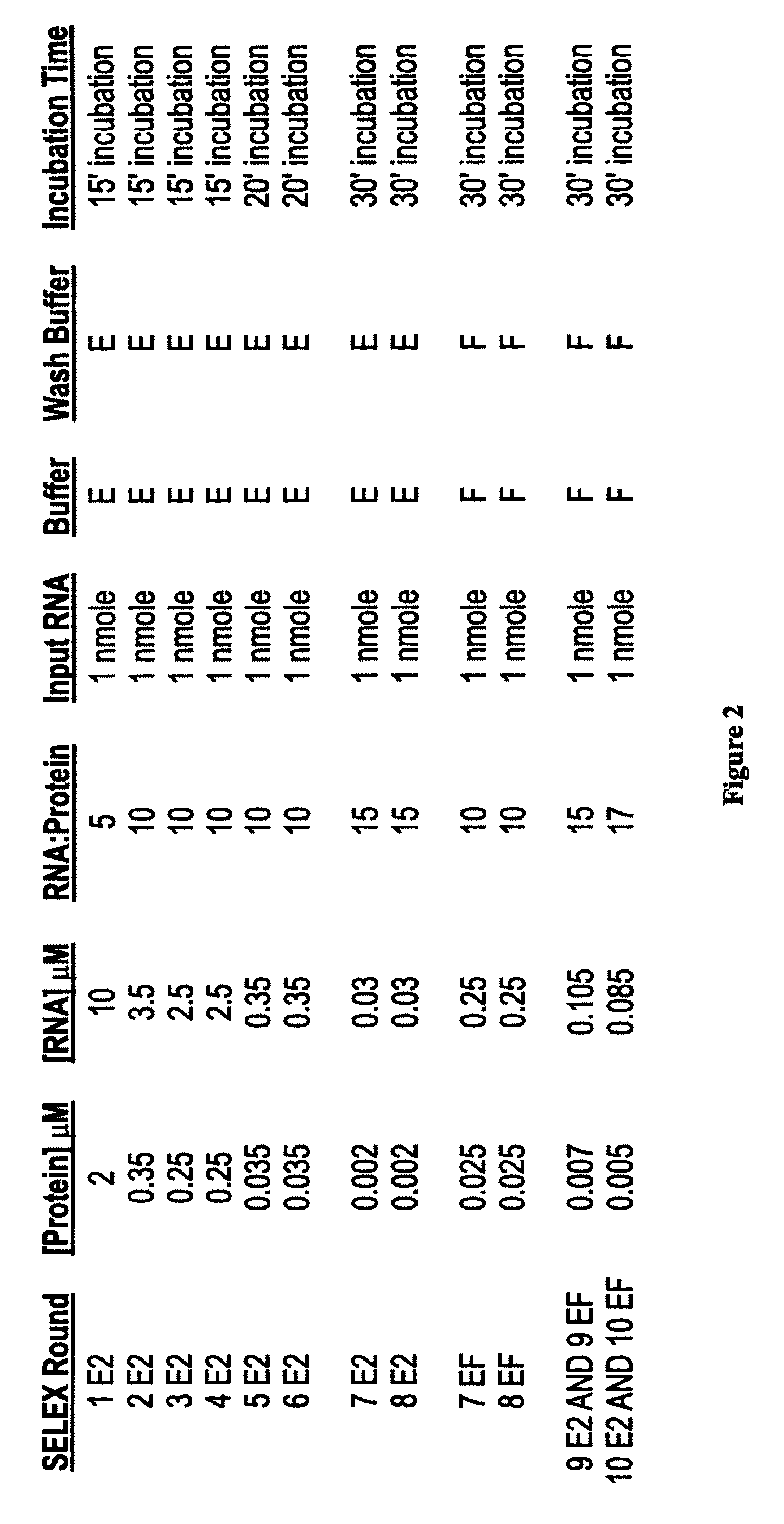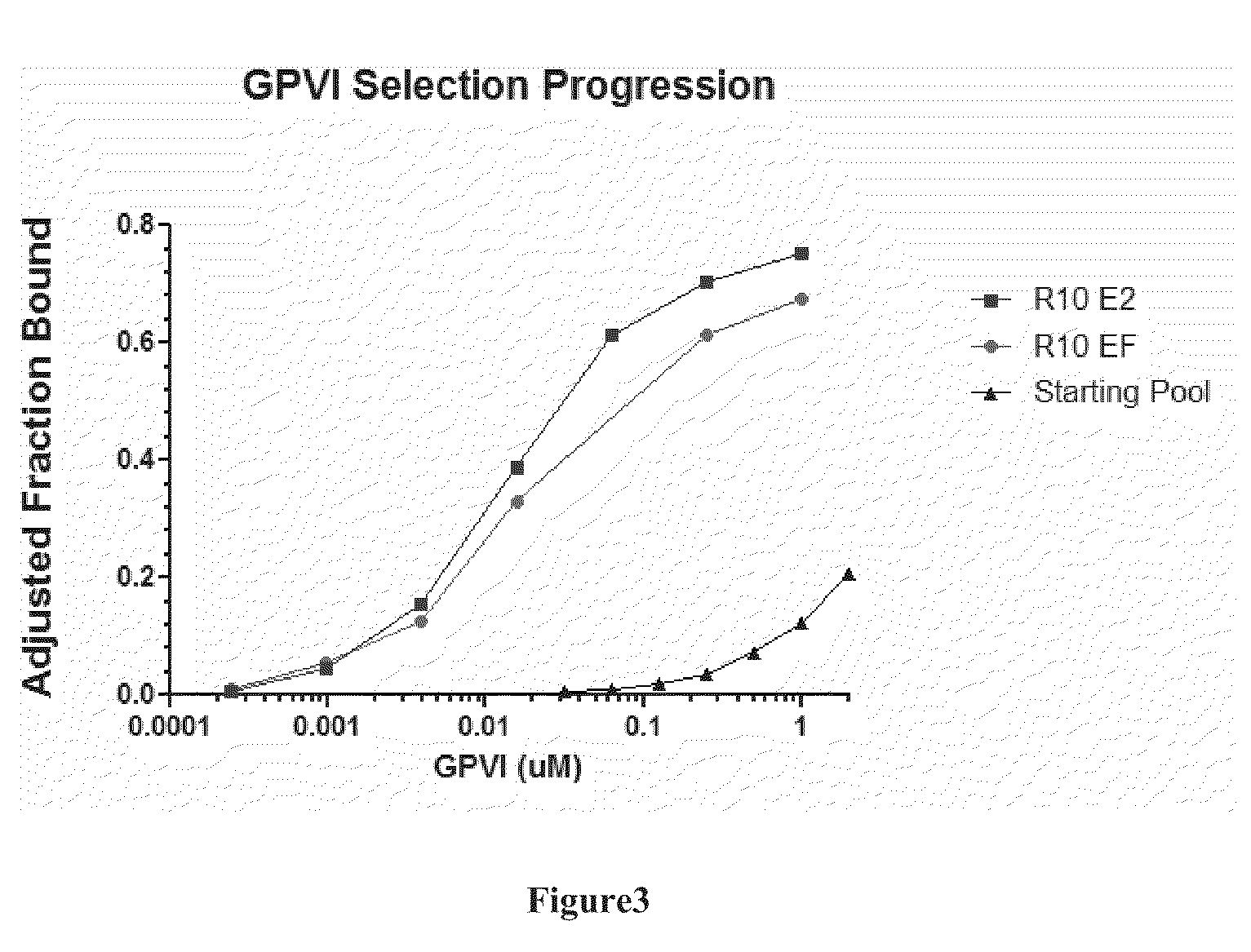Nucleic acid modulators of glycoprotein VI
a glycoprotein and nucleic acid technology, applied in the field of antiplatelet pharmacologic system, can solve the problems of limited efforts to discover and develop antagonists of this receptor, and achieve the effect of enhancing the destruction of the nucleic acid gpvi ligand, and reducing or eliminating the binding of the gpvi ligand
- Summary
- Abstract
- Description
- Claims
- Application Information
AI Technical Summary
Benefits of technology
Problems solved by technology
Method used
Image
Examples
example 1
Identification of Nucleic Acid Ligands to GPVI
[0322]The SELEX method was used to obtain ligands which bind the extracellular domain of GPVI as described and illustrated in FIG. 1 below.
[0323]A starting candidate DNA library was generated by heat annealing and snap-cooling 1 nmole of template DNA oligo and 1.5 nmoles of 5′ DNA primer oligo. The sequence of the DNA template oligo for designing the candidate mixture are: 5′-TCTCGGATCC TCAGCGAGTC GTCTG(N40)CCGCA TCGTCCTCCC TA-3′(SEQ ID NO:4) (N40 represents 40 contiguous nucleotides synthesized with equimolar quantities of A, T, G and C), the 5′ primer oligo and 3′ primer oligo are, respectively, 5′-GGGGGAATTC TAATACGACTCACTATAGGG AGGACGATGC GG-3′ (SEQ ID NO:5) (T7 promoter sequence is underlined), and 5′-TCTCGGATCC TCAGCGAGTC GTCTG-3′ (SEQ ID NO:6). The reaction was filled in with Exo− Klenow, stopped by addition of EDTA to a final concentration of 2 mM, and extracted with PCI (phenol:chloroform:isoamyl alcohol (25:24:1)) and then chlo...
example 2
Sequencing and Identification of a Structural Family of GPVI Nucleic Acid Ligands
[0327]The final PCR products representing anti-GPVI enriched ligand libraries from Round 10 of the SELEX experiments described in Example 1 were digested with EcoR1 and BamH1, cleaned with a purification kit, and directionally cloned into linearized pUC19 vector. Bacterial colonies were streaked for single clones and 5 mL overnight cultures were inoculated from single colonies. Plasmid DNA was prepared from single colonies using Qiagen Plasmid Mini Prep kits. Forty plasmids from each SELEX experiment were sequenced utilizing a vector primer. DNA sequences derived from the random region are shown in FIG. 4. Analysis of these sequences identified 6 unique sequences, which are labeled as “A” through “F” in FIG. 4. The corresponding unique DNA sequences of the full-length ligand clones are shown in Table 1 below, whereas sequences representing the random region are provided in Table 2.
[0328]
TABLE 1Full-Leng...
example 3
Truncation and Mutational Probing of Anti-GPVI Ligand Structure
[0337]The conserved secondary structure of the anti-GPVI ligands presented in FIG. 5 allows reliable predictions as to the minimal sequence required to form this structure and bind with high affinity to GPVI. Initial experiments were aimed at defining the 5′ and 3′ boundary sequence requirements for maintaining an ligand having the desired structure and function.
[0338]The consensus secondary structure presented in FIG. 5 indicates that regions of the ligand derived from the 3′ fixed region of the ligand library are likely dispensable for GPVI binding. The importance of the 3′ fixed region derived sequence on interaction with GPVI was tested by heat annealing the complementary DNA 3′ primer onto the P32 end-labeled RNA identified above, equilibrating, and performing binding studies (as described above in Example 1). The results are shown in FIG. 6. The binding of the ligand with and without the annealed primer was compara...
PUM
| Property | Measurement | Unit |
|---|---|---|
| dissociation constant | aaaaa | aaaaa |
| dissociation constant | aaaaa | aaaaa |
| dissociation constant | aaaaa | aaaaa |
Abstract
Description
Claims
Application Information
 Login to View More
Login to View More - R&D
- Intellectual Property
- Life Sciences
- Materials
- Tech Scout
- Unparalleled Data Quality
- Higher Quality Content
- 60% Fewer Hallucinations
Browse by: Latest US Patents, China's latest patents, Technical Efficacy Thesaurus, Application Domain, Technology Topic, Popular Technical Reports.
© 2025 PatSnap. All rights reserved.Legal|Privacy policy|Modern Slavery Act Transparency Statement|Sitemap|About US| Contact US: help@patsnap.com



